Cruising opens up a world of adventure, from tropical island-hopping to epic river journeys through history. Below we present the top 10 best cruise destinations on the planet – a mix of iconic ocean routes and intimate river cruises – based on recent traveler reviews, expert recommendations, and overall experience quality. Each destination includes route highlights, recommended cruise lines, ideal seasons, typical pricing, onboard/onshore experiences, and the unique charm that sets it apart. Read on for an expert travel guide to these bucket-list cruises, plus a handy comparison table to help you plan your next voyage.
1. Caribbean – Tropical Islands & Crystal Seas
Route Highlights: The Caribbean is a classic cruise paradise, famed for its turquoise waters, sunny climate, and diverse islands. Routes are typically split into Western, Eastern, and Southern Caribbean itineraries. Western routes visit ports like Cozumel (Mexico) and Roatán (Honduras) for Mayan ruins and reef diving. Eastern routes include cultural stops in San Juan (Puerto Rico) and Nassau (Bahamas). Longer Southern cruises reach remote gems like Aruba’s white beaches and St. Lucia’s lush Pitons. You can swim with stingrays in Grand Cayman, zipline over Jamaican rainforests, or relax on private island resorts owned by cruise lines. Every island offers something unique – from reggae rhythms in Ocho Rios, Jamaica to the colonial charm of Old San Juan.
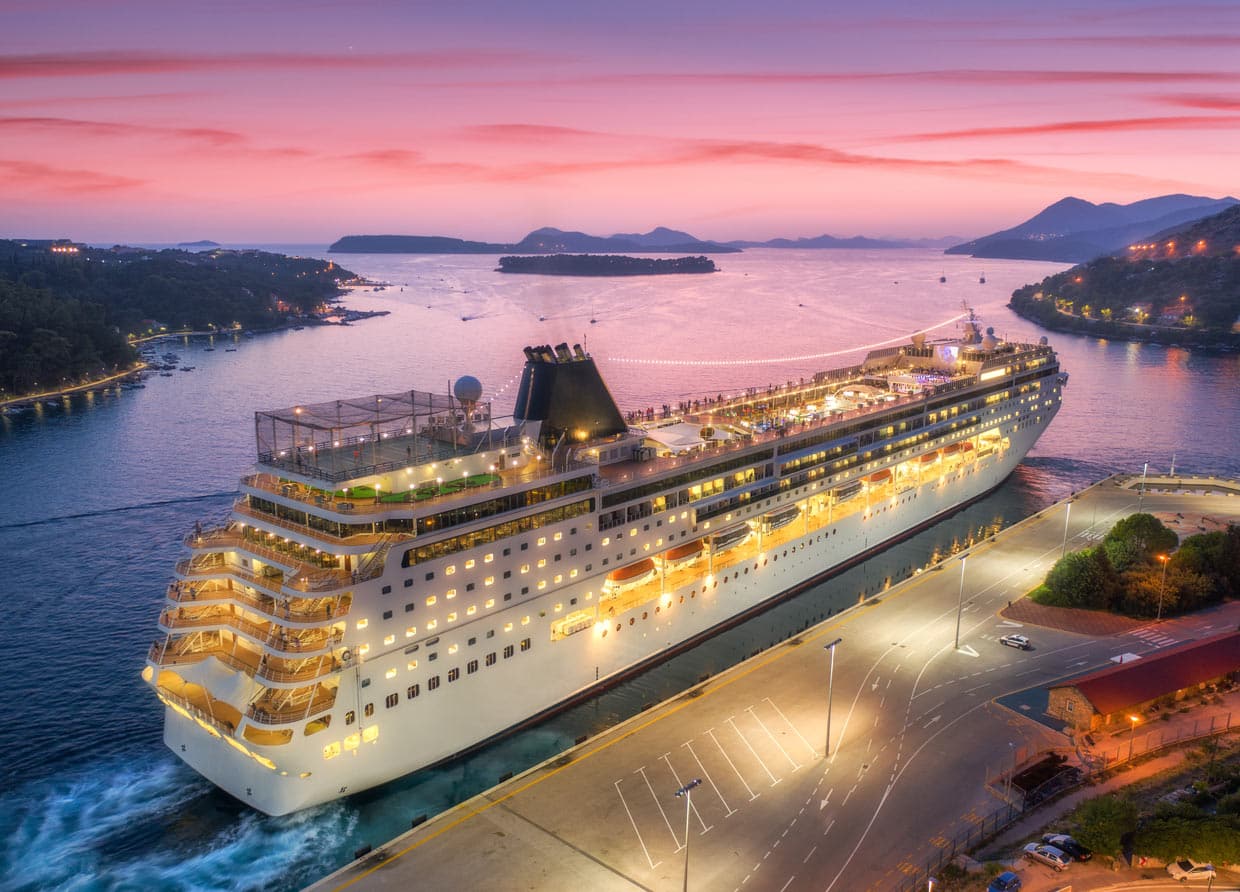
Cruise Lines: Major lines like Royal Caribbean, Carnival, and Norwegian dominate here, offering mega-ships packed with entertainment. For a premium experience, Celebrity Cruises and Princess are popular. Newer adult-only lines like Virgin Voyages also earn rave reviews for their modern twist on Caribbean cruising.
Ideal Season: November to April (dry, cooler months). This avoids the June–Nov hurricane season, though summer cruises are available at lower prices.
Average Pricing: Budget-friendly – ** ~$800–$2,500 per person** for a 7-night cruise (double occupancy). Short 3–4 night getaways can start around $500, while luxury or holiday sailings may exceed $3,000.
Onboard/Onshore Experience: Caribbean cruises boast the largest resort-style ships – think water parks, zip lines, Broadway shows, and endless dining. Onboard facilities include kids’ clubs, casinos, spas, and even surf simulators on mega-ships. Many itineraries feature a “private island day” (such as CocoCay or Castaway Cay) with beach barbeques and water sports. On shore, popular excursions range from snorkeling coral reefs and rainforest hikes to historical walking tours (e.g. old forts in San Juan) and shopping for local rum cake and crafts.
What Makes It Unique: Pure tropical bliss and variety. The Caribbean offers an easy, relaxing escape with a new island each day. Travelers love the beach time, warm hospitality, and fun in the sun, leading to very high satisfaction. It’s especially favored by first-time cruisers, families, and anyone seeking a carefree vacation in paradise.
2. Mediterranean – Culture & Cuisine in Europe’s Seas
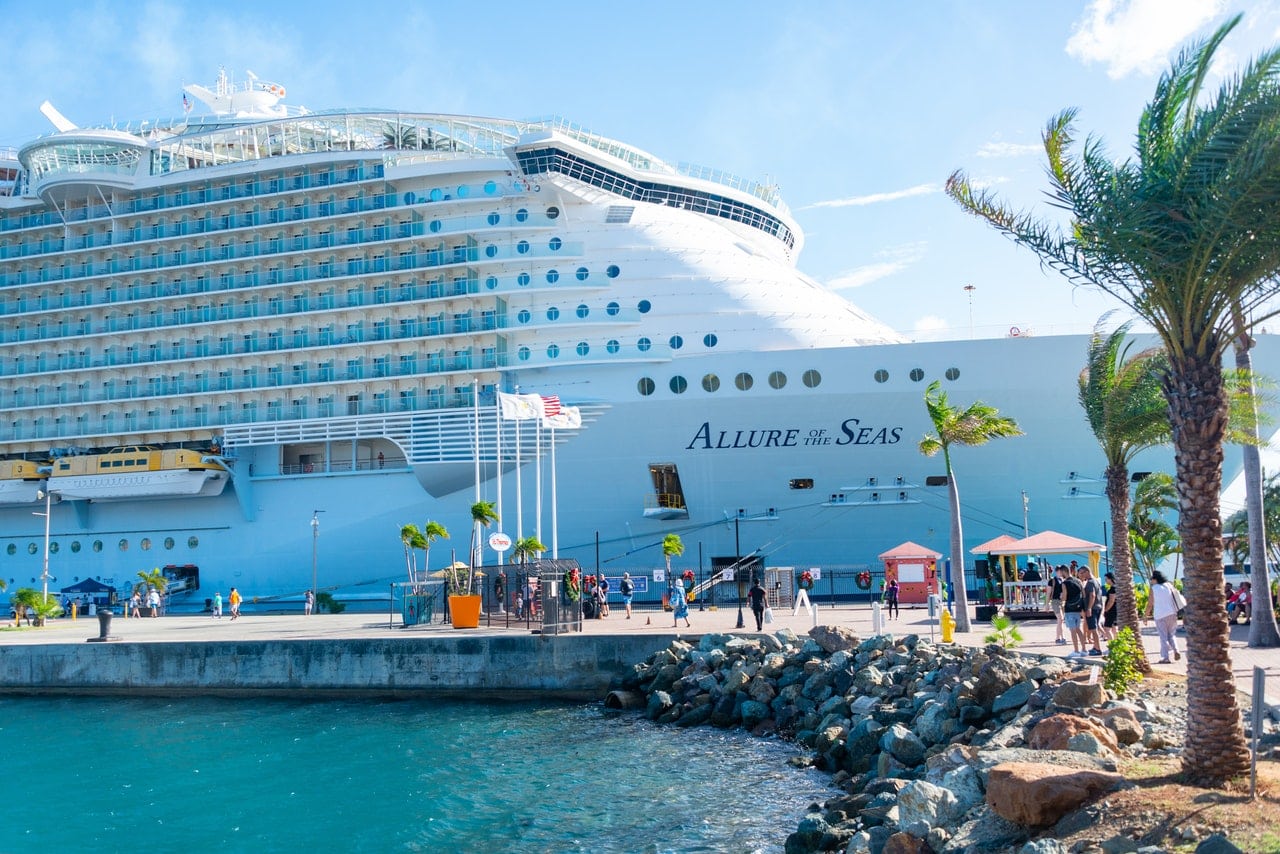
Route Highlights: A Mediterranean cruise is a grand tour of Europe’s coastal treasures, packed with historical and cultural icons. Typical routes cover the Western Med (Spain, France, Italy) or Eastern Med (Greek Isles, Turkey, Adriatic) – or combine both on longer voyages. You might stroll the Colosseum in Rome, shop the chic boutiques of Cannes, explore Gaudí’s architecture in Barcelona, and sip local wine in Mallorca – all in one trip. In the Eastern Med, travelers hop among Greek Isles like Santorini and Mykonos (whitewashed villages and blue domes), visit Istanbul’s bazaars and holy sites, and walk the medieval walls of Dubrovnik. Each port offers rich history: ancient ruins in Athens, Renaissance art in Florence, or the sacred sites of Jerusalem on longer itineraries.
Cruise Lines: You’ll find MSC Cruises and Costa (Europe-based lines) heavily in the Med, alongside Royal Caribbean, Norwegian, and Celebrity during summer. For luxury or small-ship experiences, Viking Ocean, Azamara, and Seabourn are top choices, often including more overnight port stays and curated excursions.
Ideal Season: May to October. Peak in July–August for hot beach weather (and crowds); April–May and Sept–Oct offer milder temperatures and fewer tourists – ideal for sightseeing. Many lines pause in winter due to cooler weather
Average Pricing: ** ~$1,000–$3,000 per person** for a 7–10 day cruise. Mainstream summer cruises average around $1,200–$1,800 pp. Longer or ultra-luxury voyages (or peak July) can run $4,000+. Budget travelers can find offseason deals under $1k. (Airfare to Europe is a big factor to consider as well.)
Onboard/Onshore Experience: Med cruises often emphasize enrichment: expect local cuisine, wine tastings, and cultural shows on board (e.g. flamenco dance performances or guest lectures on ancient history). Ships range from large resorts to intimate yachts. Onshore, days are filled with guided tours – exploring museums, cathedrals, and UNESCO sites – but also leisure time at cafés or beaches. You might take a pasta-making class in Naples, enjoy a flamenco show in Barcelona, or swim in the Aegean’s crystal-clear coves. Facilities on Med-focused ships are similar to Caribbean ones (pools, spas, broad entertainment) but with a bit more European flair in dining and activities.
What Makes It Unique: The Mediterranean is a cultural feast, where you can visit multiple countries in one cruise. Nowhere else can you experience such a blend of history, art, architecture, and cuisine in a single journey. From the glamour of the French Riviera to the sacred sites of the Holy Land, the Med offers unparalleled variety. Traveler satisfaction is very high, especially among culture enthusiasts and foodies, who rave about exploring bucket-list cities by day and relaxing at sea by night.
3. Alaska – Glaciers, Wildlife & Frontier Charm
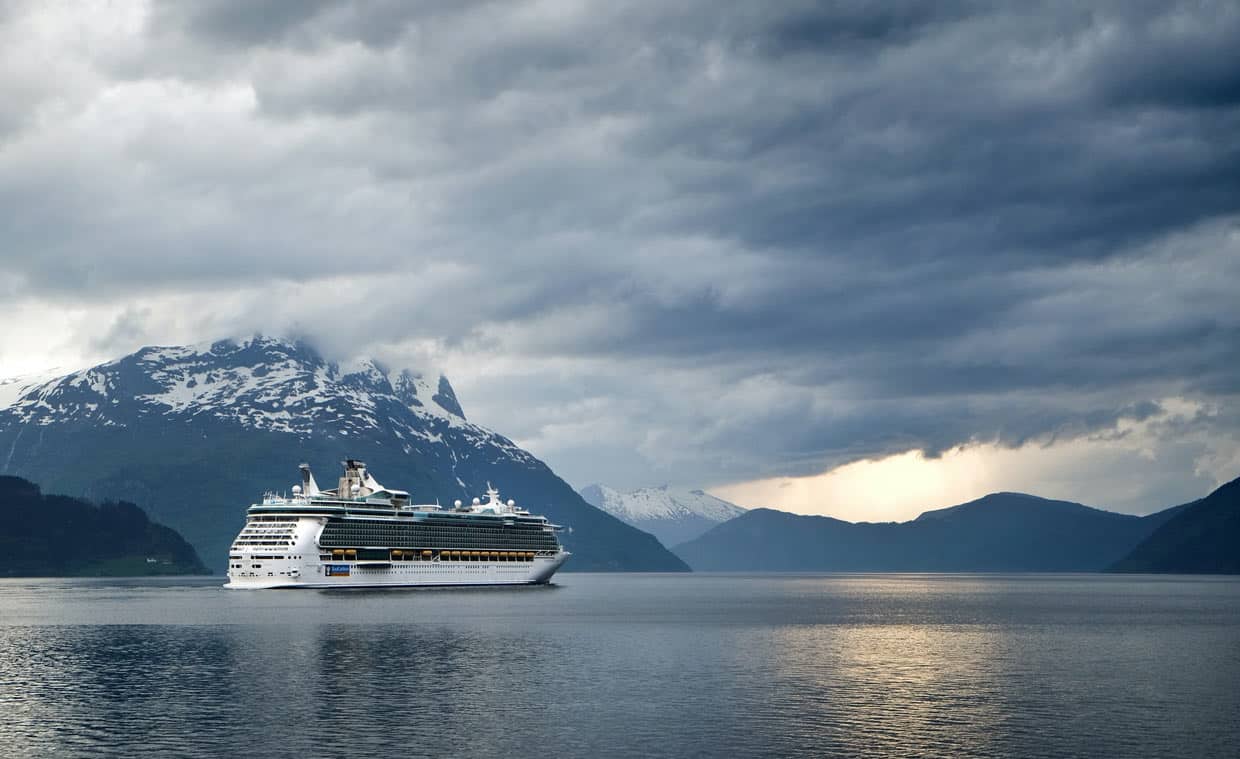
Route Highlights: Alaska’s Inside Passage is a spectacular voyage through fjords and icy straits, offering close-up views of towering glaciers and abundant wildlife. Most routes sail from Seattle or Vancouver up along Alaska’s southeast coast. Highlights include cruising past Glacier Bay or Hubbard Glacier, where you’ll hear the thunder of ice calving into the sea. Ports like Juneau, Ketchikan, Skagway, and Sitka provide a taste of Alaska’s frontier history and Native culture. You can pan for gold in historic Skagway or visit a Tlingit village in Ketchikan. Nature is the star here: spot bald eagles, bears foraging onshore, breaching whales, sea otters, and maybe even the aurora on late-season trips. Don’t miss iconic excursions like a helicopter landing on a glacier, dog-sledding on snowfields, or taking a scenic railroad through the mountains.
Cruise Lines: Princess Cruises and Holland America Line are Alaska experts, known for their extensive itineraries and land-tour add-ons (like Denali National Park). Royal Caribbean, Celebrity, and Norwegian also operate big ships in Alaska with family-friendly perks. For small-ship adventure, lines such as Lindblad Expeditions (NatGeo) or UnCruise Adventures offer intimate wilderness-focused cruises.
Ideal Season: May to September (Alaska’s summer). June–August are warmest with long daylight hours (great for wildlife and scenery). May and September are cooler but less crowded; late September may feature fall colors or northern lights, but some facilities shut for winter.
Average Pricing: ** ~$1,200–$3,500 per person** for 7-night Inside Passage (higher than Caribbean due to remote location). Mainstream fares in shoulder season can be ~$1,000, while peak summer balcony cabins often $2,000+. Add-ons like land tours or one-way Gulf of Alaska routes (including interior Alaska) increase costs. Expedition cruises are pricier, frequently $5,000+.
Onboard/Onshore Experience: Ships in Alaska are designed for viewing – expect heated indoor pools, panoramic observation lounges, and expert naturalists giving talks. The vibe is casual and cozy: grab a blanket and hot chocolate on deck as you watch glaciers glide by. Onboard entertainment may include Alaska-themed programs (folk music, park ranger presentations). On shore, it’s all about adventure and nature: hiking in temperate rainforests, fishing for salmon, visiting sled dog camps, and scenic floatplane flights. Many cruises offer a salmon bake or crab feast experience. Facilities in port towns are smaller (think quaint shops and local pubs), which adds to the charm.
What Makes It Unique: Alaska is America’s last frontier – a cruise here feels like a journey into the wild. Nowhere else will your ship be dwarfed by massive glaciers and snow-draped peaks in this way. The combination of raw natural beauty, up-close wildlife encounters, and Gold Rush-era towns gives Alaska cruises a special magic. Satisfaction is extremely high (often 5/5) for those seeking scenery and adventure; even seasoned travelers call it one of the most breathtaking cruises in the world.
4. Northern Europe (Scandinavia & Fjords) – Majestic Fjords & Old-World Cities
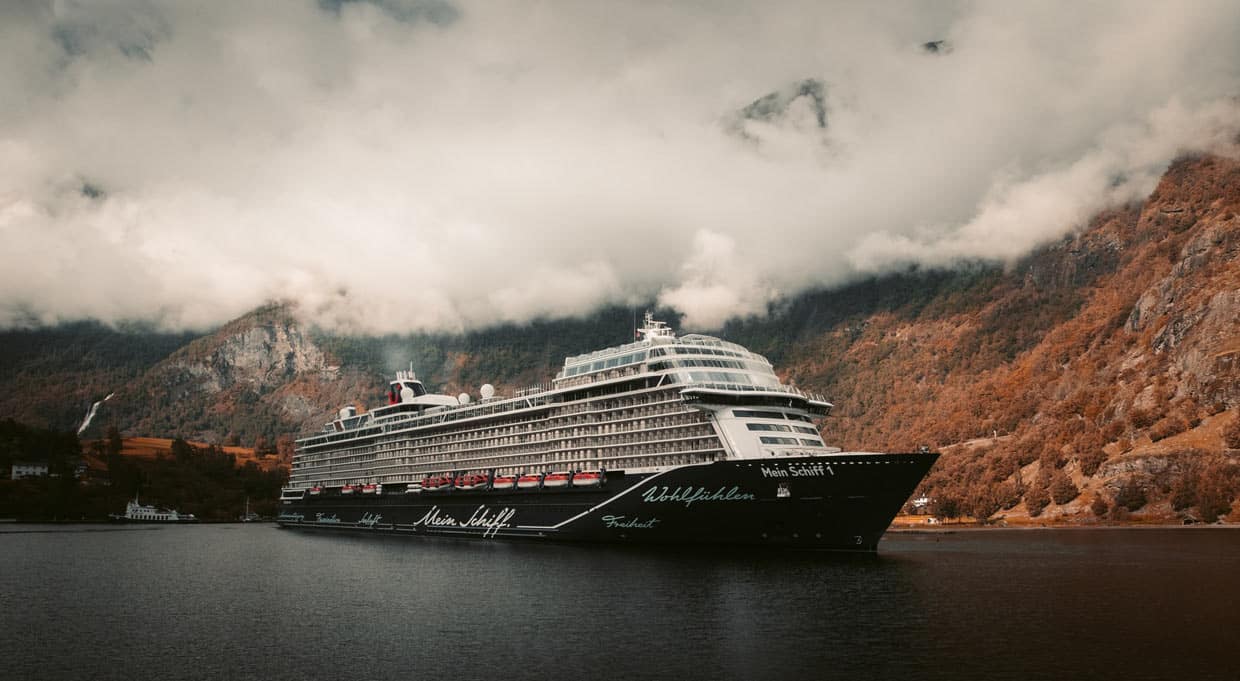
Route Highlights: A cruise in Northern Europe immerses you in storybook scenery and rich heritage. Popular itineraries include the Norwegian Fjords, the Baltic Sea capitals, or even the Arctic circles. In Norway, ships navigate deep blue fjords like Geirangerfjord or Sognefjord, flanked by cliffs, waterfalls, and quaint villages. You’ll explore Scandinavian ports such as Bergen (colorful Hanseatic wharf), Oslo (Viking history, modern design), and above the Arctic Circle in Tromsø or Nordkapp for the midnight sun – and possibly the Northern Lights in late season. Baltic cruises focus on culture: the grandeur of St. Petersburg, Russia (when accessible), medieval cobblestones of Tallinn, Estonia, the canals of Copenhagen, and chic design of Stockholm. Other routes might venture to Iceland (geysers and glaciers) or the British Isles. Highlights include medieval castles, Viking museums, and natural wonders like geothermal springs or puffin colonies.
Cruise Lines: Princess and Holland America often offer extensive Northern Europe programs. Viking Ocean Cruises (born from its Scandinavian roots) is highly rated for intimate ships and destination focus in this region. Celebrity and Royal Caribbean run summer Baltics/fjords cruises (with larger ships bringing more amenities). For the ultimate fjord immersion, Norwegian line Hurtigruten operates small ships that go deep into coastal communities (and also expedition cruises to Arctic Svalbard). Luxury lines like Regent or Silversea offer upscale options, sometimes including overnights in big cities.
Ideal Season: May to September. June–August are prime for mild weather and long daylight (the “midnight sun” near Solstice). Shoulder months May and September can be cooler (and Baltic cruises in September have beautiful autumn colors). The season is short due to cold/dark winters – most ships leave by October.
Average Pricing: ** ~$1,500–$4,000 per person** for 7–12 day cruises. Fjord cruises of a week might start around $1,200, but Baltic itineraries (often 10–14 days) average $2,000+. Because these trips are seasonal and port-intensive, prices are higher than Caribbean. All-inclusive luxury or expedition voyages can exceed $5,000 pp.
Onboard/Onshore Experience: Onboard, expect a slightly quieter, scenery-focused atmosphere – lots of time on deck or in lounges watching passing coastlines. Ships will offer enrichment about European history and local cultures. Many have heated pools or solariums for cooler days. Onshore, days are filled with guided city tours (palaces, cathedrals, museums) and nature excursions (fjord hikes, kayaking, or visiting a farm to taste local cheeses). In Norway, an unforgettable option is the Flåm Railway for stunning mountain vistas. In the Baltics, you might attend a ballet in St. Petersburg or a folk performance in Estonia. Facilities in ports are modern, and English is widely spoken, making independent exploring easy too.
What Makes It Unique: Cruising Northern Europe offers a blend of jaw-dropping natural beauty and European history. Waking up to a quiet fjord at dawn, or sailing past Scandinavian towns with church spires and bronze rooftops, feels almost magical. This region is also less crowded than the Med, and the cultural experiences – Viking lore, Nordic myths, Russian imperial opulence – are truly enriching. Travelers often rate these cruises very highly for their scenery and sophistication, calling it a must-do for nature lovers and culture buffs alike.
5. Asia (Southeast Asia & More) – Exotic Ports of the East
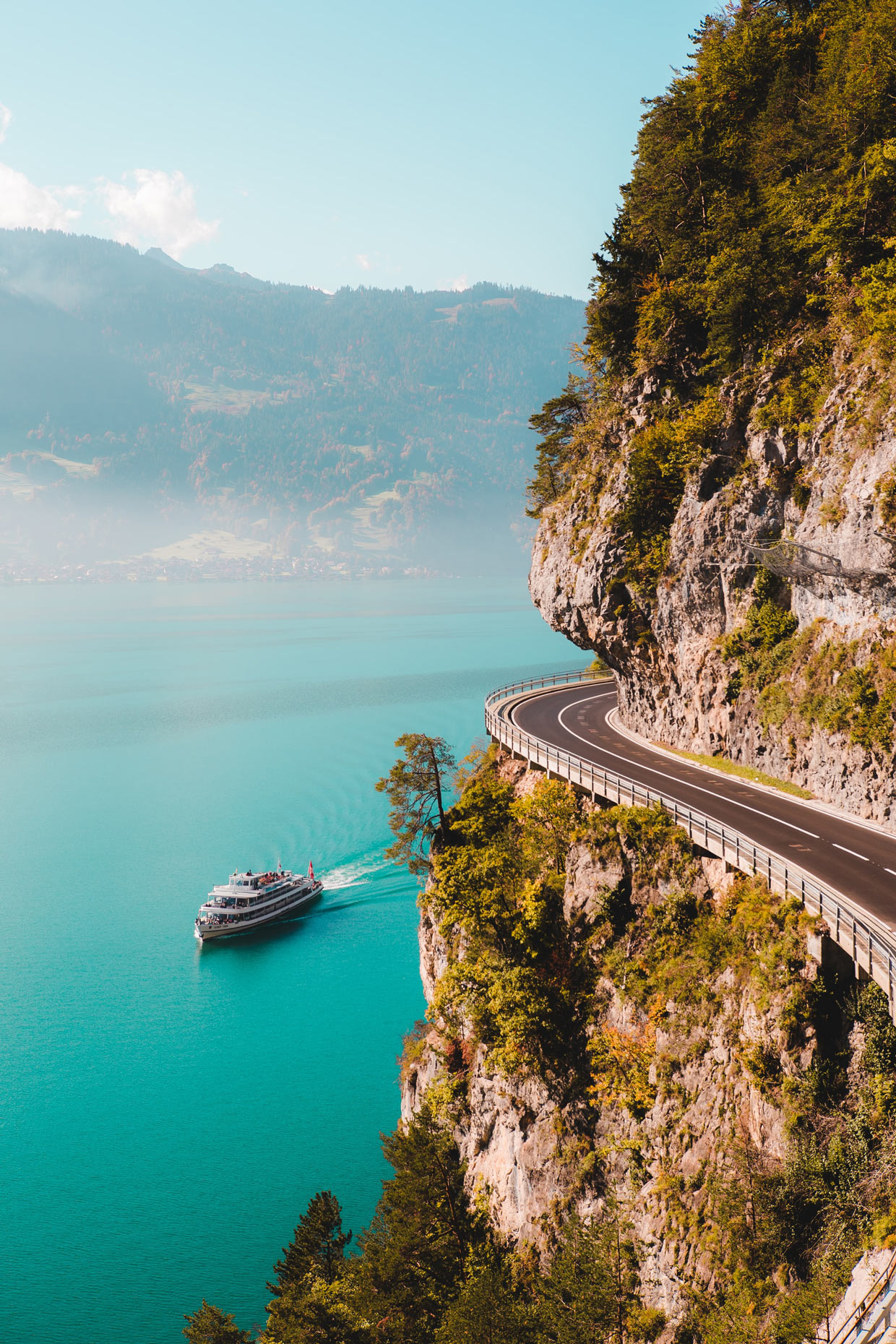
Route Highlights: An Asia cruise is a feast for the senses that can span many countries. Common routes include Southeast Asia (Thailand, Vietnam, Singapore, Malaysia), East Asia (China, Japan, South Korea), or combinations thereof. Imagine sailing into Bangkok (Laem Chabang) to tour gilded palaces and night markets, then hopping to Ho Chi Minh City for Vietnamese pho and history, and on to Singapore for futuristic skylines and hawker food. Other highlights: visiting tropical islands in Thailand (Phuket’s beaches) or Indonesia (Bali’s temples and rice terraces), exploring colonial heritage in Penang or Yangon, and experiencing ultra-modern cities like Hong Kong, Tokyo, or Seoul. Some itineraries include lesser-known gems like Halong Bay, Vietnam (limestone karsts in emerald waters) or Borobudur, Indonesia (an ancient Buddhist temple). River cruise options also exist – e.g. the Mekong River through Vietnam and Cambodia for an intimate look at rural life and Angkor Wat tours.
Cruise Lines: A wide variety. Princess Cruises and Celebrity are known for robust Asia itineraries (Princess even homeports in Japan seasonally). Royal Caribbean and Dream Cruises (now defunct) have sailed from China/Singapore with large ships tailored to local markets. Upscale lines like Oceania Cruises and Azamara offer in-depth Asia routes with more destination focus. River lines such as Viking or AmaWaterways operate Mekong cruises, and Pandaw or Avalon run smaller riverboats in Southeast Asia. For luxury expedition style (Indonesia, Philippines), look at Seabourn or Silversea.
Ideal Season: Autumn and Winter months are generally best. Many Asia cruises run from October to April to avoid the monsoons. For Southeast Asia, November–February offers less heat and humidity. Japan and China are lovely in spring (cherry blossoms in April) or fall (October) – summers can be very hot and typhoon-prone. Always check specific regions as climates vary (e.g. Indonesia is best in summer, while East Asia is sweltering then).
Average Pricing: ** ~$1,000–$3,000 per person** for a 7–10 day Asia cruise. Prices can fluctuate widely with season and itinerary length – shorter Southeast Asia cruises (5 nights) might be $600–$800, whereas a two-week cruise across multiple countries might be $2,500+. Luxury or small-ship options (and land extensions to bucket-list sites like Angkor Wat or the Great Wall) will increase the cost.
Onboard/Onshore Experience: On board, expect cultural touches: perhaps Asian cuisine options, enrichment lectures on history, or even Tai Chi classes on deck at sunrise. Many lines bring on local performers – think traditional Thai dancers or Japanese taiko drummers – during port stops. Ships range from large resorts with water parks (appealing to Asian families) to intimate vessels focusing on destination lectures and gourmet dining. On shore, the experiences are incredibly diverse: one day you might be visiting a sacred temple in Bali or taking a tuk-tuk ride to Bangkok’s Grand Palace; the next, shopping for silk in a Vietnamese market or riding a bullet train in Japan. Excursions can include snorkeling in coral-rich waters, feeding elephants at an ethical sanctuary in Thailand, touring war history sites in Vietnam, or participating in a Japanese tea ceremony. The blend of ancient traditions and modern megacities gives cruisers a fascinating contrast.
What Makes It Unique: Asia offers an unmatched tapestry of cultures, flavors, and landscapes. A single cruise can expose you to multiple languages and cuisines – from dim sum in Hong Kong to sushi in Tokyo to pad Thai in Bangkok. The region’s warm hospitality and dramatic sights (like sailing past Hong Kong’s neon skyline or into Halong Bay’s misty islands) leave a deep impression. Travelers report very high satisfaction, often describing Asia cruises as “eye-opening” and filled with bucket-list moments, whether it’s seeing iconic landmarks or engaging with local customs.
6. South Pacific & Oceania – Paradise Islands and Down Under Adventures
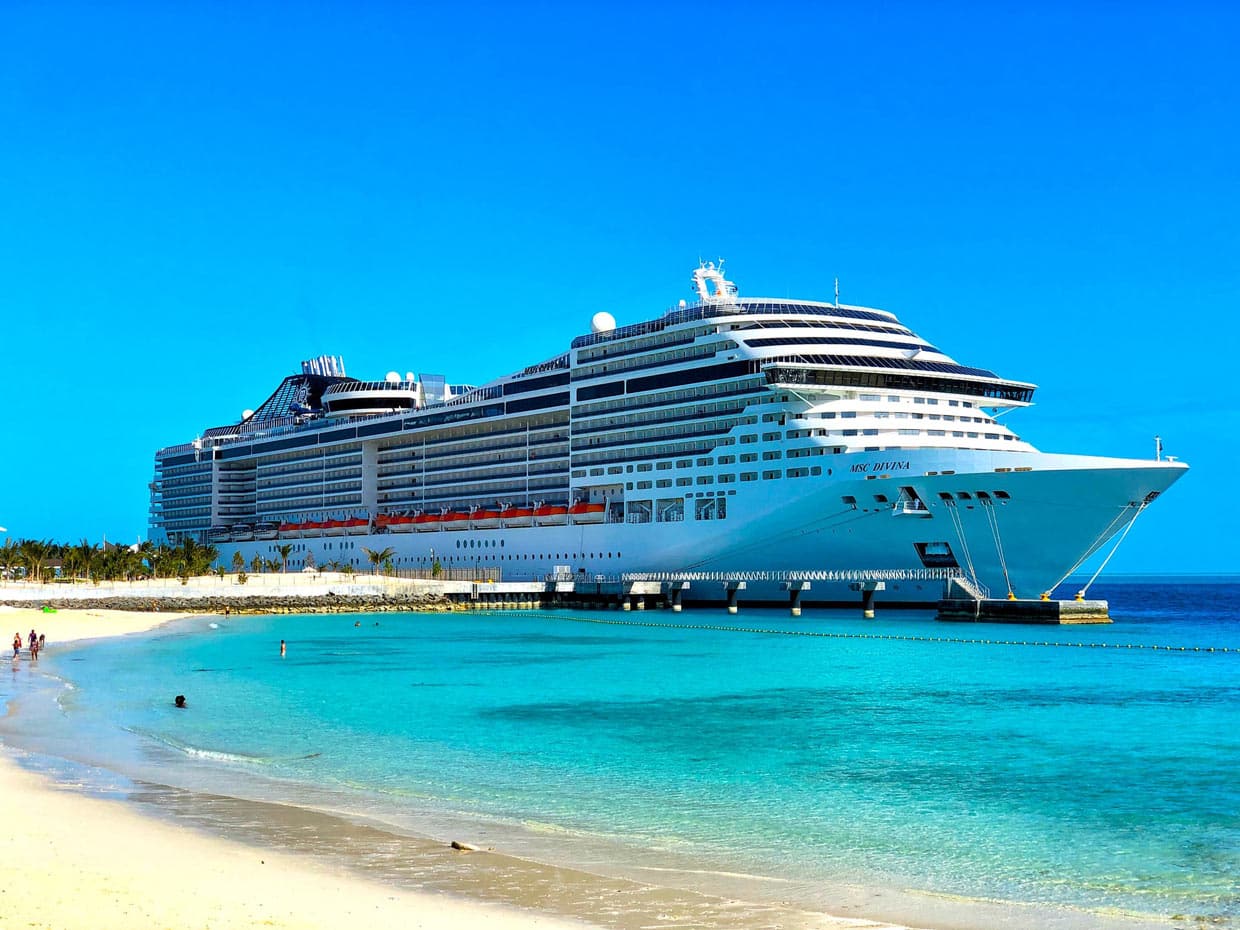
Route Highlights: The South Pacific is the stuff of dreams: turquoise lagoons, coral atolls, and lush volcanic isles dotting the vast ocean. Cruises in this region often depart from Australia or New Zealand, combining visits to idyllic Pacific islands with stops in those countries. You might sail from Sydney or Auckland and soon find yourself in Fiji, Samoa, or the Cook Islands, where time slows down. Highlights include French Polynesia – e.g. Bora Bora’s famous blue lagoon, Moorea’s emerald peaks, and Tahiti’s vibrant markets – truly “postcard-worthy” destinations. In the Melanesian isles like Vanuatu or New Caledonia, you’ll encounter rich indigenous cultures, fire dancing ceremonies, and world-class snorkeling over coral reefs. Many itineraries feature Suva (Fiji) or Port Vila (Vanuatu) for cultural immersion, plus smaller atolls where you can swim with sea turtles in crystal-clear water. If including Australia/NZ, possible stops are Great Barrier Reef towns (Cairns) or New Zealand’s Bay of Islands and scenic Milford Sound (spectacular fjordland on New Zealand’s South Island).
Cruise Lines: Princess Cruises and P\&O Australia are big players, serving Australia/NZ and South Pacific islands with mid-size ships tailored to local tastes. Royal Caribbean and Carnival Australia also operate fun-focused ships from Sydney or Brisbane. For an upscale boutique experience in French Polynesia, Paul Gauguin Cruises is renowned (small luxury ship intimately exploring Tahiti and the Society Islands). Oceania Cruises (the line) and Windstar also sail in the South Pacific, offering gourmet dining and unique ports. Expedition lines like Ponant or National Geographic Orion visit remote Pacific islands and Papua New Guinea.
Ideal Season: April to November for the South Pacific islands, which avoids the cyclone season (roughly December–March) and brings drier weather. Conversely, cruises around Australia/New Zealand are often best in their summer (November to March) when it’s warm, aligning with when many ships relocate there. Essentially, late spring, summer, and early autumn are ideal across Oceania.
Average Pricing: ** ~$1,500–$4,000 per person** for a 10–14 day South Pacific sailing (longer itineraries are common given distances). Shorter 7-night Australia coastal cruises might be $1,000–$1,500. Luxury Tahiti cruises (e.g., Paul Gauguin) typically range $4,000–$6,000 per person due to the exclusive destination. Watch for flight costs to the region, which are significant for most travelers.
Onboard/Onshore Experience: Life onboard tends to be relaxed and outdoor-oriented, reflecting the Polynesian vibe. Expect island-themed deck parties, beach BBQ days, and perhaps workshops on pearl jewelry or ukulele music. Many ships employ local guides or cultural ambassadors – for instance, Paul Gauguin Cruises includes Tahitian hosts who teach Polynesian crafts and songs. On larger ships, you’ll still have pools, shows, and all modern amenities, but with a bit more laid-back atmosphere than in busy regions. Onshore, the South Pacific is an adventure playground and cultural classroom: snorkel or dive among dazzling coral reefs (the marine life is spectacular, from clownfish to reef sharks), visit remote villages to experience kava ceremonies or fire dances, hike to waterfalls in lush jungles, or simply bliss out on some of the world’s most beautiful beaches. In Australia and NZ, excursions include the urban delights of Sydney or Melbourne, wine tasting in New Zealand’s Marlborough region, or wildlife encounters (kangaroos, koalas, kiwi birds) on special tours.
What Makes It Unique: This region is often described as paradise on Earth. The combination of utter natural beauty – vibrant coral reefs, coconut palm beaches, volcanic peaks – and the rich Polynesian culture makes every stop feel enchanting. It’s also far less crowded; you may be one of few ships visiting a tiny atoll, leading to very personal interactions with locals. Traveler satisfaction is sky-high among those seeking relaxation and natural beauty. Many call South Pacific cruises a “trip of a lifetime” for the romance and tranquility they offer, whether it’s a honeymoon in Tahiti or a family adventure to the Fiji islands.
7. Galápagos Islands – Wildlife Wonderland Expedition
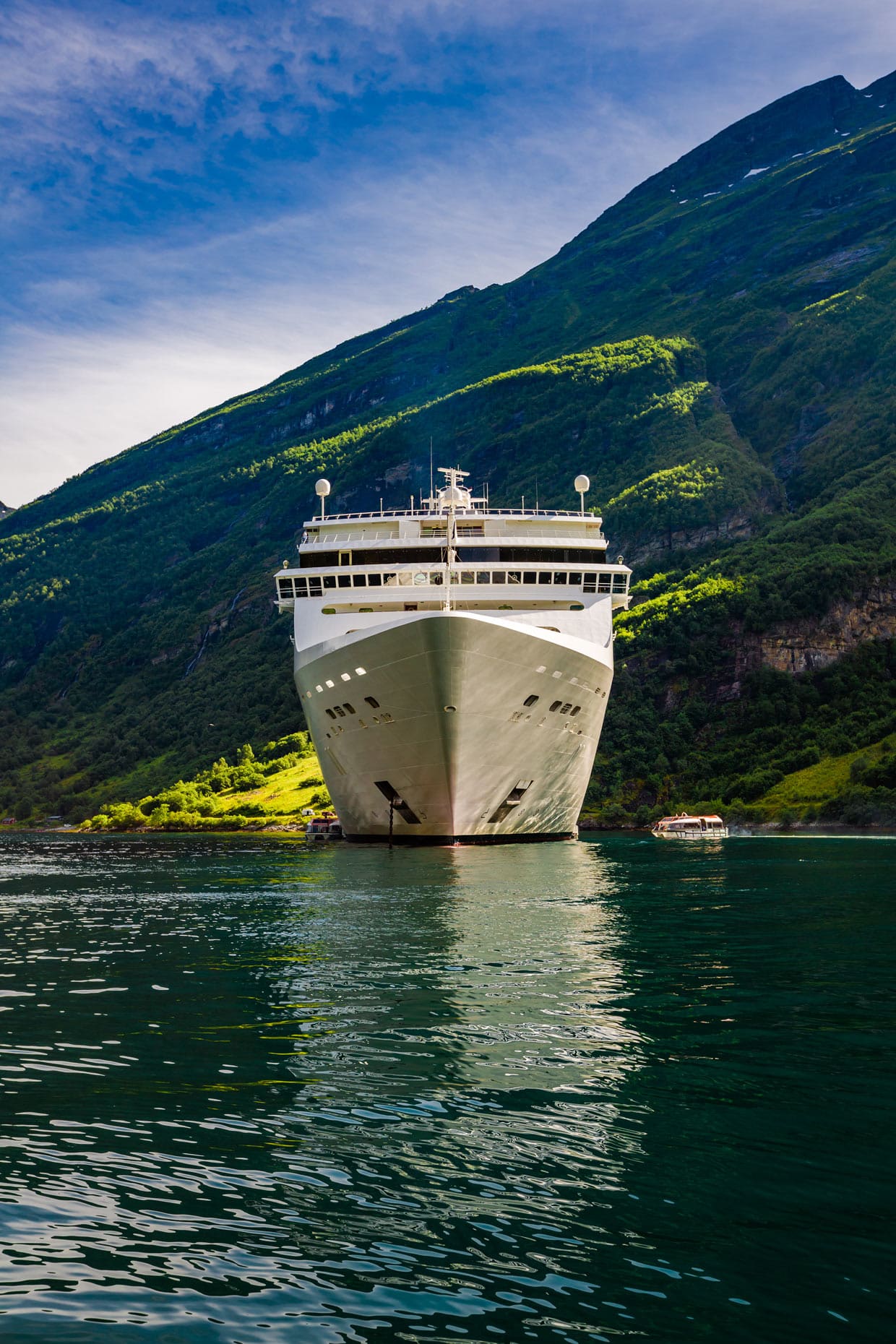
Route Highlights: The Galápagos, 600 miles off Ecuador’s coast, offer a once-in-a-lifetime small-ship cruise focused on astonishing wildlife found nowhere else. The itinerary typically sails between central islands like Santa Cruz, Isabela, Santiago, and San Cristóbal, with twice-daily excursions to different isles. You’ll walk among colonies of animals utterly unafraid of humans: see blue-footed boobies doing mating dances, watch marine iguanas swim and sun themselves on black lava rocks, and encounter giant Galápagos tortoises lumbering through the highlands. On other days, you might snorkel with playful sea lions and reef sharks, spot Galápagos penguins darting undersea (yes, penguins on the equator!), and observe flocks of frigatebirds and albatrosses soaring above. Each island has its unique species and landscapes – from the red-sand beach of Rábida to the volcanic vistas of Bartolomé. Naturalist guides lead every excursion, ensuring you don’t miss details of Darwin’s living laboratory.
Cruise Lines: Only small ships (max ~100 passengers) can operate in Galápagos National Park. Celebrity Cruises has a presence with its expedition yachts Celebrity Flora, Xpedition, and others, offering a blend of luxury and eco-adventure. Lindblad Expeditions (partnered with National Geographic) is a top choice for in-depth guiding and photography expertise. Other quality operators include Silversea Expeditions (Silver Origin ship), Quasar Expeditions, and Avalon or Tauck (which charter small vessels). All itineraries are fairly similar due to park restrictions, so the reputation of the line and guiding is key.
Ideal Season: Year-round destination. There isn’t a bad time – wildlife is always active, though specific events vary. The warm/wet season (Dec–May) brings calmer seas, warm water, and lush green islands – great for snorkeling and seeing the courtship of birds. The cooler/dry season (June–Nov) has nutrient-rich currents; you might see more marine life like whale sharks, and it’s the breeding season for some creatures. June–September can have choppier seas and garúa mist, but also is when baby sea lions are born. In short, pick any time based on your interest (and availability) – traveler reviews indicate that every month has its highlights and the islands delight year-round.
Average Pricing: ** ~$4,000–$8,000 per person** for a 7-night Galápagos cruise package. These prices are higher due to the remote location, small ship luxury, and all-inclusive nature (guides, gear, etc.). Shorter 4-5 night itineraries can be a bit less, and ultra-luxury options or longer 10-14 night explorations can run $10,000+. Also budget for flights to Ecuador and the Galápagos fee/taxes (roughly $100 park fee).
Onboard/Onshore Experience: These expedition cruises are all about nature immersion. Onboard, ships are upscale but casual – expect comfortable cabins, lectures in the lounge on what you’ll see the next day, and maybe a hot tub or small gym but no flashy entertainment. The ratio of naturalist guides to guests is excellent, so you get personal attention and expertise. Meals often incorporate Ecuadorian flavors (ceviche, local fruits) and you’ll dine with the guides and fellow passengers, sharing stories. Each day involves active excursions: guided hikes over lava fields, beach walks among sea lions, snorkeling or kayaking twice a day. You might make wet landings from zodiac boats onto pristine shores. There is downtime for siestas or stargazing on deck at night (with the equator’s clear skies). Onshore facilities are minimal – this is wilderness, aside from the small towns at start/end – but that’s the allure.
What Makes It Unique: The Galápagos cruise experience is like no other – it’s often described as “visiting another planet” of strange and wonderful creatures. The up-close wildlife encounters are beyond compare: animals exhibit no fear, so you stand literally feet from dancing boobies or giant tortoises in their natural habitat. It’s a transformative journey that deepens one’s appreciation for conservation and nature. While the cost is high, traveler satisfaction is off the charts – most consider it worth every penny for the intimate, educational adventure and memories of snorkelling with sea turtles or watching baby albatrosses learn to fly. A Galápagos cruise isn’t a typical luxury cruise; it’s a high-end eco-expedition that many rate as the best trip of their lives.
8. Antarctica – The Ultimate Polar Adventure
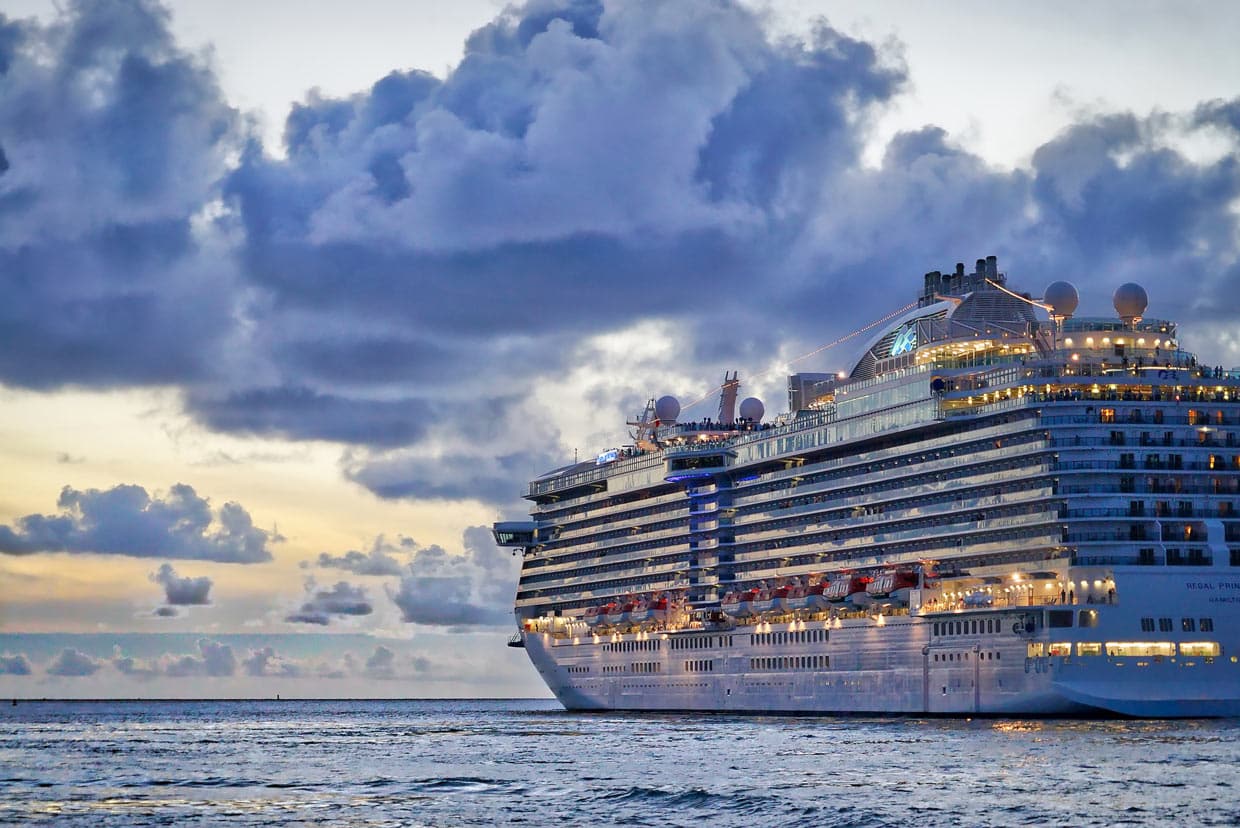
Route Highlights: An Antarctica cruise is an expedition to Earth’s most remote wilderness. Cruises depart from Ushuaia, Argentina (the “End of the World”) and cross the infamous Drake Passage – an adventure in itself, with either rollicking “Drake Shake” seas or calm “Drake Lake” conditions. After about two days at sea, you arrive at the Antarctic Peninsula, a realm of towering icebergs, snow-covered mountains, and wildlife galore. Instead of port calls, each day features zodiac boat outings and landings on icy shores (weather permitting). You’ll visit penguin rookeries bustling with Adélie, gentoo, and chinstrap penguins, watch elephant seals and fur seals lounge on ice floes, and perhaps spot pods of orcas and humpback whales feeding in the frigid waters. Notable sites include Paradise Bay (aptly named for its stark beauty), the Lemaire Channel (a narrow passage between cliffs nicknamed “Kodak Gap” for its photogenic splendor), and historic research stations. Some itineraries also include the Falkland Islands and South Georgia, where you can see king penguins and explore polar history (e.g., Sir Ernest Shackleton’s grave on South Georgia).
Cruise Lines: Specialized expedition companies operate here. Quark Expeditions and Hurtigruten are leaders in polar cruising, offering robust adventure activities (like camping on the ice or paddleboarding). Lindblad Expeditions/National Geographic has a long legacy of Antarctic trips with expert scientists aboard. Luxury seekers might opt for Silversea Expeditions, Seabourn (with their expedition ships), or Ponant, which provide a mix of pampering and exploration. Newer entrants like Viking Expeditions and Scenic also have state-of-the-art ships in Antarctica. All carry fewer than ~200 guests due to landing quotas, ensuring an intimate experience.
Ideal Season: November to March (the Antarctic Austral summer). Early season (Nov–Dec) has pristine snow and courtship behaviors (and is when penguin chicks hatch around Dec). January–February brings slightly warmer weather and very active wildlife (penguin colonies are busy feeding chicks, longer days). By March, many animals (and ships) prepare to leave, but the late season can offer stunning sunset light and whale sightings at their peak. Outside these months, the sea ice makes travel impossible.
Average Pricing: ** ~$8,000–$15,000 per person** for a 10–14 day expedition cruise. Antarctica is one of the most expensive cruise destinations – small ships, all-inclusive excursions, polar gear, and an expert crew drive up the cost. Budget options (simple vessel, triple-share cabins) might come down to ~$6,000, whereas luxury suites or longer itineraries that include South Georgia can exceed $15–20k pp. Keep in mind charter flights to embarkation (often Buenos Aires to Ushuaia) may be additional.
Onboard/Onshore Experience: These are true expedition vessels – your days revolve around exploration. Onboard, there may be lounges and a bar, a library, and a lecture room, but no Broadway shows or casinos. Instead, expect fascinating lectures on glaciology, marine biology, and Antarctic history each day. Many ships have mud rooms and equipment for kayaking or even a mini-submarine (on high-end ships). Cuisine is usually excellent and international (with free-flowing hot cocoa after chilly outings!). When conditions allow, you’ll embark on zodiac cruises among icebergs, watching seals sunbathe on ice floes, and make landfall to hike or sit among thousands of penguins – a sensory overload of sight, sound, and yes, smell (penguin colonies are pungent!). Onshore “facilities” are basically none – just nature and perhaps a flagged path marked by guides. Some passengers choose a polar plunge (a quick dip in near-freezing water) for bragging rights. The camaraderie on these trips is special; groups bond over the shared awe of what they’re seeing. Every night, over dinner, there’s excitement discussing the day’s sightings.
What Makes It Unique: Antarctica is the final frontier for cruisers – Earth’s last unspoiled continent, with no permanent population and an environment that feels otherworldly. The sense of exploration is palpable: you’re following the wake of legendary explorers amid ice and solitude. Visitors routinely describe feeling humbled and deeply moved by the grandeur of ice shelves and the close encounters with penguins and whales. It’s also a very active trip – you’re not lounging by a pool, but bundling up for an adventure that few will ever experience. Those who venture south give Antarctica some of the highest satisfaction ratings of any destination. In travel surveys, it often scores a perfect 100% – truly unforgettable and life-changing.
9. Nile River (Egypt) – Time Travel on the Nile
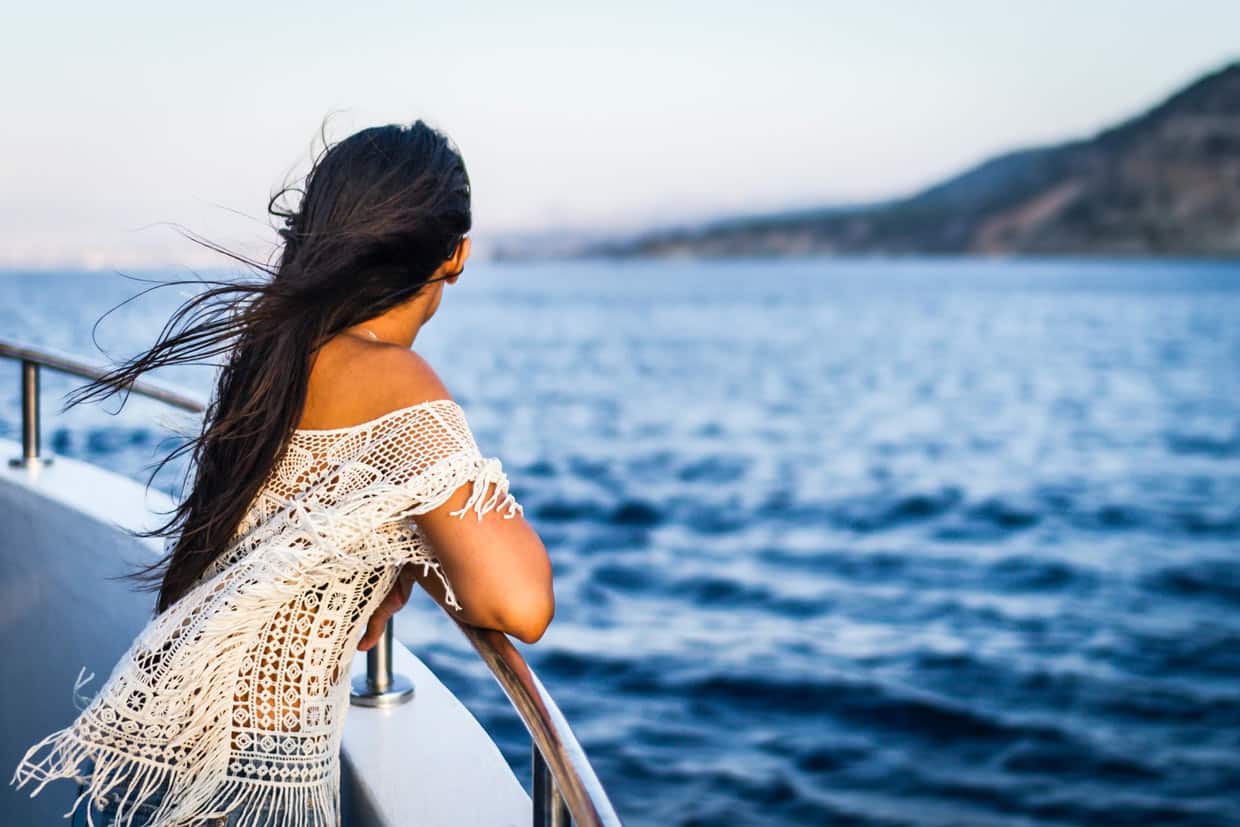
Route Highlights: A Nile River cruise in Egypt is a journey through ancient history along the world’s longest river. Most cruises are 4–7 nights between Luxor and Aswan in Upper Egypt, visiting the iconic temples and tombs of the Pharaohs at a relaxed pace. Highlights include the Valley of the Kings in Luxor – where you’ll descend into brilliantly decorated royal tombs (including that of Tutankhamun) – and the colossal Temples of Karnak and Luxor, which come alive with hieroglyphs and towering columns. As you sail south, you stop at Edfu to see the well-preserved Temple of Horus and at Kom Ombo to visit the unique twin temple dedicated to Sobek (the crocodile god) – often at sunset, a magical time. The cruise typically ends (or begins) in Aswan, home to the beautiful Philae Temple (devoted to Isis), which was relocated island by island from rising waters. Optional excursions include a bus or flight trip to Abu Simbel, the stunning rock-cut temples of Ramses II on Lake Nasser. Between these sightseeing stops, you’ll lounge on deck watching the Nile’s scenery drift by: farmers tending lush green fields, date palms swaying, and children waving from villages – a slice of timeless rural Egypt.
Cruise Lines: Nile cruises are operated by a mix of local Egyptian companies and international tour operators. Viking River Cruises offers a high-standard Nile cruise (with a Scandinavian touch to the ship design). Uniworld Boutique River Cruises has an all-suite luxury ship on the Nile as well. Tour operators like Abercrombie & Kent or Tauck charter ships for a deluxe experience, including Egyptologist guides. On the local side, there are many 5-star ships such as Mövenpick, Sonesta, and the Oberoi Philae, known for their hospitality. For a boutique feel, Sanctuary Retreats and AmaWaterways (AmaDahlia) also operate elegant vessels. All Nile cruises include guided tours at each site (usually with an Egyptologist), often as part of a larger Cairo + Nile package.
Ideal Season: October to April, when temperatures are cooler. Egyptian summers (May–Aug) are extremely hot (100°F+/38°C), so while cruises run year-round, the winter months have the most pleasant weather for walking around temples. December and January are peak tourist season (mild days and cool nights), so shoulder months like October–November or March–April can be ideal to avoid crowds but still enjoy good weather.
Average Pricing: ** ~$1,500–$4,000 per person** for a 4–7 night Nile cruise as part of a package (often including domestic flights and tours). There are cheaper local options under $1k, but quality varies. Luxury options (with top-notch ships and small groups) can be $4,000+. Many travelers book through a tour that bundles in Cairo hotel stays, which affects pricing. Standalone cruise-only rates might start around $200 per night and go up to $500+ per night for luxury.
Onboard/Onshore Experience: Nile riverboats are essentially floating hotels. Onboard, you’ll find a sun deck with a small pool, shaded lounge chairs to watch the riverbanks, a restaurant (set meal times, often buffet plus some à la carte dinners), and evening entertainment like traditional belly dancing or an Egyptian galabeya party where guests dress in local attire for fun. Cabins are comfortable (think hotel room size) and many ships have a spa or small gym. The atmosphere is peaceful as the ship sails during daytime between sites (nights are usually docked). On shore, each day brings incredible sightseeing with your guide: you’ll typically tour two sites a day (morning and afternoon) – start early to beat the heat, return for lunch and a rest, then an afternoon excursion. You might ride in a horse-drawn carriage in Edfu, sail on a felucca (traditional sailboat) in Aswan at sunset, or stroll through a colorful souk to buy spices and souvenirs. Security is well-managed and groups move together. Don’t underestimate the simple joy of evening on deck, under the stars, with the Nile gently flowing – you truly feel the spirit of ancient Egypt around you.
What Makes It Unique: A Nile cruise is often described as a floating history lesson – you are literally drifting in the footsteps of pharaohs. There’s an unmatched thrill to docking your boat and walking straight into a 3,000-year-old temple. The Nile itself lends a serene backdrop, connecting all these sites like pearls on a string. Beyond antiquities, interacting with local culture (like sipping hibiscus tea on a Nubian village visit) adds depth to the experience. Travelers frequently give Nile cruises very high satisfaction marks, citing the seamless blend of adventure and comfort: you unpack once and your “hotel” takes you to each new wonder. It’s both relaxing and intellectually stimulating, and utterly unique to glide on the Nile at sunset, flanked by history on all sides.
10. Danube River (Central Europe) – Castles, Culture & Charming Capitals
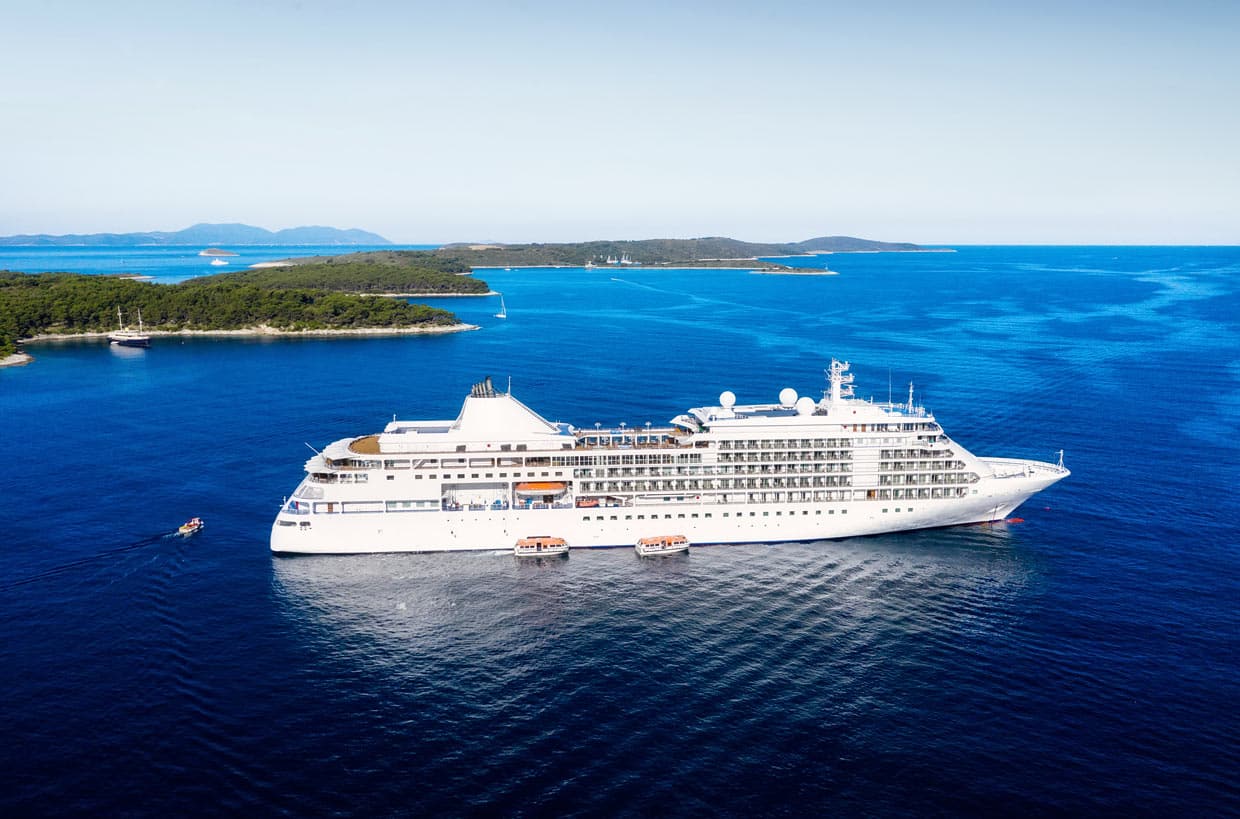
Route Highlights: The Danube is Europe’s quintessential river cruise, flowing through 10 countries and inspiring centuries of music and lore (think Strauss’s Blue Danube waltz). A typical 7-night Danube cruise covers the stretch between Germany’s Bavaria and Hungary, giving you a taste of Central Europe’s best. You might begin in Passau, Germany, then sail to Vienna, Austria, where you can attend a classical concert and savor sachertorte chocolate cake, and onward to Bratislava, Slovakia and Budapest, Hungary, with its stunning Parliament building anchoring the riverfront. Along the way, you glide through the Wachau Valley in Austria, a gorgeous UNESCO region of terraced vineyards and fairy-tale villages (don’t miss Melk Abbey’s golden grandeur). Other popular stops are Linz (with excursion to Salzburg, Mozart’s birthplace), Dürnstein (where Richard the Lionheart was imprisoned – and you can sample local apricot schnapps), and sometimes Belgrade, Serbia, on longer itineraries into Eastern Europe. The river itself is a highlight – from your ship you’ll see hilltop castles, charming churches, and daily life on the banks. In December, special Christmas market cruises are magical, stopping at festive markets in Vienna and Budapest for spiced mulled wine and crafts.
Cruise Lines: Viking River Cruises is practically synonymous with the Danube, with a large fleet of modern “longships” and culturally heavy itineraries. AmaWaterways, Avalon Waterways, and Uniworld are other top-rated lines on the Danube, each offering something slightly different (Ama often appeals to active travelers with bike tours, Uniworld provides luxurious boutique vessels, etc.). Tauck and Scenic cater to the high-end with all-inclusive pricing and exclusive experiences (like private palace tours in Vienna). Emerald Cruises and Avalon tend to attract younger or more budget-conscious guests with stylish ships. All these cruises include guided tours in each port, but also allow free time to explore.
Ideal Season: May to September for the best weather (spring flowers and summer sunshine). April and October are shoulder season – cooler but still pleasant and fewer crowds. In December, special winter cruises draw those keen on Christmas markets (bundle up!). One consideration: mid-summer can occasionally bring low water levels (or high, in spring) that impact sailing, but lines adjust with minimal disruption. The Danube is generally navigable most of the year, except maybe January–February when some sections can freeze or are less popular due to cold.
Average Pricing: ** ~$2,000–$5,000 per person** for a 7–10 night Danube cruise (often inclusive of excursions and wine/beer with meals). Pricing varies by season and cabin type: a standard lower-deck cabin in spring might be ~$2,000, while a balcony suite in peak summer on a luxury line might be $4,000+. Keep in mind these are smaller ships (around 150 guests) with nearly all tours included, which is reflected in the cost. Deals can sometimes be found in late autumn or for last-minute bookings on less full sailings.
Onboard/Onshore Experience: River ships are intimate – usually 3 decks, a sun deck on top, one restaurant and one lounge. The atmosphere is social and relaxed, with open seating dining and often local musicians coming aboard to entertain (like a Hungarian folkloric show or an Austrian violin quartet one evening). Cuisine tends to highlight regional specialties – you might have Wiener schnitzel in Austria or goulash soup in Hungary onboard. There’s no flashy entertainment or pools (though some newer ships have a small pool or spa). The real entertainment is watching the scenery as you sail gently past medieval towns, vineyards, and castle ruins – perhaps with a glass of Grüner Veltliner wine in hand. Onshore, sightseeing is very immersive: walk through ornate Baroque palaces, visit grand cathedrals like St. Stephen’s in Vienna, and stroll cobblestone lanes in quaint towns. Guides provide rich context about Habsburg emperors, Ottoman battles, and European Union modern life. Biking is a popular option on the Danube – many ships carry bikes or arrange cycling tours (one famous route is from Dürnstein to Melk along the river). Evenings in port might allow you to attend a concert or simply enjoy the illuminated architecture (Budapest’s parliament lit up at night from the ship is unforgettable).
What Makes It Unique: The Danube packs an astounding amount of culture, history, and scenic beauty into a relatively small area. In one week, you can experience four or five distinct countries, languages, and cuisines. The convenience is unbeatable: no long bus rides or trains – your hotel floats with you, right into the heart of each city. Many travelers say their Danube cruise felt like “sailing through a painting” with the picturesque landscapes and cityscapes at every turn. There’s also a poetic sense of retracing the routes of Europe’s traders and kings along this storied river. Satisfaction is typically extremely high, especially for mature travelers and couples who appreciate the relaxed pace and rich storytelling. It’s a romantic and enlightening journey that truly captures the essence of Central Europe.
Comparison of Top 10 Cruise Destinations
To help you decide which cruise destination best suits your interests, here’s a side-by-side comparison of the top 10 destinations, ranked across key criteria like uniqueness of experience, typical pricing, best travel season, onboard facilities focus, and traveler satisfaction levels:
| Destination | Experience Uniqueness | Avg. Price (per person) | Best Season | Onboard/Onshore Highlights | Traveler Satisfaction |
|---|---|---|---|---|---|
| Caribbean (Ocean) | High – Tropical island variety, beaches & cultures. Easy, fun vibe for all ages. | $800–$2,500 (7 nights) | Nov–Apr (dry season) | Mega-ships with waterparks, casinos; onshore snorkeling, private island beach days. | Very High (family-friendly paradise) |
| Mediterranean (Ocean) | High – Iconic cities & historic sites in one trip. Diverse European cultures. | $1,000–$3,000 (7–10 nights) | May–Oct (warm, peak Jul–Aug) | Large ships & mid-size vessels; enrichment lectures, UNESCO tours (Rome, Athens, etc.). | Very High (culture & food lovers) |
| Alaska (Ocean) | Very High – Dramatic glaciers, wildlife, frontier history. One-of-a-kind scenery. | $1,200–$3,500 (7 nights) | May–Sep (summer) | Ships with heated solariums, expert naturalists; onshore glacier treks, whale watching. | Extremely High (scenic awe) |
| N. Europe Fjords (Ocean) | Very High – Norwegian fjords, Baltic capitals, Northern Lights potential. | $1,500–$4,000 (10 nights) | May–Sep (mild, long days) | Smaller ships, cozy lounges; onshore medieval towns, Viking history, fjord kayaking. | Very High (nature & culture mix) |
| Asia (Ocean/River) | High – Exotic mix of cultures, temples, megacities. Truly multi-sensory. | $1,000–$3,000 (7–10 nights) | Oct–Mar (varies by region) | Mega-ships to luxe midsize; onshore ancient temples, street food tours, markets. | Very High (eye-opening, diverse) |
| South Pacific & Oceania (Ocean) | Very High – Idyllic islands, coral reefs, Aussie/Kiwi highlights. Remote paradise feel. | $1,500–$4,000 (10–14 nights) | Apr–Nov (islands); Nov–Mar (Aus/NZ) | Resort-style and smaller ships; onshore lagoon snorkeling, Polynesian culture shows. | Sky High (tranquil beauty) |
| Galápagos Islands (Ocean) | Extraordinary – Endemic wildlife encounters, Darwin’s living lab. Niche expedition. | $4,000–$8,000 (7 nights all-inc.) | Year-round (split seasons) | Small yachts, top naturalist guides; daily zodiac landings, snorkeling with sea lions. | Off the Charts (life-changing for nature lovers) |
| Antarctica (Ocean) | Extraordinary – Pristine polar landscapes, penguins & icebergs in an extreme environment. | $8,000–$15,000 (10–12 nights) | Nov–Mar (Antarctic summer) | Expedition ships with lectures, zodiacs; onshore walking among penguins, glacier kayaking. | Exceptional (bucket-list, 100% in surveys) |
| Nile River (Egypt) | High – Pharaonic history along an iconic river, temples & tombs galore. Time-travel vibe. | $1,500–$4,000 (4–7 nights package) | Oct–Apr (cooler weather) | Boutique riverboats, sun deck pools; onshore guided pyramid/temple tours (Luxor, Karnak), local folkloric shows onboard. | Very High (rich history & comfort) |
| Danube River (Europe) | High – Storybook European journey, multiple countries in one cruise. Castles & culture abound. | $2,000–$5,000 (7–10 nights) | May–Sep (summer), Dec (Xmas) | Intimate river ships, inclusive tours; onshore city walks (Vienna, Budapest), wine tastings, bike rides in villages. | Very High (enriching & relaxing) |
Traveler Satisfaction: All these destinations earn strong reviews, but expedition cruises (Galápagos, Antarctica) often achieve near-100% satisfaction due to their once-in-a-lifetime nature. More mainstream routes like the Caribbean and Med delight a broad range of travelers, consistently scoring high marks, especially for first-timers. The best choice ultimately depends on your personal interests – whether it’s tropical relaxation, ancient cultures, majestic scenery, or wildlife adventure. Each of these top 10 destinations offers a unique and unforgettable cruising experience. Bon voyage!